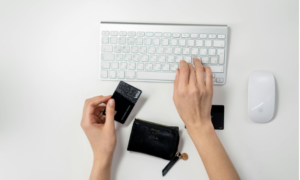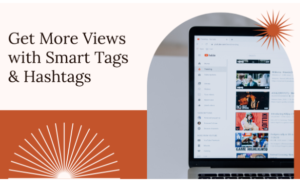In this insightful interview, we delve into the fascinating journey of Vika Lisitsyna, a designer from Moscow who transitioned from the fashion industry to product design and interfaces, discovering her true passion along the way. From her accidental start in design to leading innovative projects, her story is filled with unique experiences and valuable lessons.
You’ll learn about the critical role of an art director, the importance of meticulousness in design, and how collaboration with neural networks can enhance a designer’s work. Additionally, Vika shares her thoughts on the balance between creativity and business metrics and offers a project that exemplifies innovative thinking—the “Tinder for apartment hunting” app.
Whether you’re a seasoned designer, an aspiring creative, or someone interested in the evolving landscape of design and technology, this interview with Vika Lisitsyna offers a wealth of knowledge and inspiration. Dive in to explore how curiosity, collaboration, and a passion for improvement can lead to remarkable achievements in the design world
— Vika, tell us how you became a designer
— By accident! There was a time in my life when I really wanted to sew clothes and start my own brand. One evening, I came across a Facebook post about a small project—a fashion business school that taught how to launch clothing brands: finding fabric suppliers, forming an assortment matrix, working with factories. I wrote to them, saying I really wanted to work with them, no matter the role. My message touched them, and they invited me to join the team. I was the fourth member of the team, and we all did everything we could get our hands on.
As time went on, we grew, tasks increased, and we started to specialize based on what each of us liked to do the most. I was most concerned about our students’ experience: how easily they could find the school, how clear the program was on the website, what kind of cups they would drink from, how the presentations and workbooks would look. Over time, I realized this was art direction and UX design in its purest form.
— How did you get into product design and interfaces?
— That’s another favorite story of mine. At some point, I wanted to grow in design, but there weren’t enough design tasks at the school, so I joined the internal agency of a large group of companies—we did everything there. From the personal brand of the vice president to water packaging, a brick factory website, water and cosmetics packaging, exhibitions, branding for a residential complex, an aquarium, and a cinema chain. Among other things, there was an interface for an internal analytics service—it collected traffic data for all our stores, and analysts calculated revenue and the cost of advertising campaigns based on this data. That’s when I realized that interfaces are a love forever!
— If you had to choose just one most important quality for a designer, what would it be?
— I would say it’s meticulousness. A designer should care about everything, not from a preachy standpoint, but from that desire to make things better and help, which fills almost all designers (and why we all love them).
— What is the role of an art director for you?
— An art director is someone who must simultaneously know how to help and not interfere. Always be there but stand aside. Their task is to assemble a great team, find the treasure in each designer, and elevate it to the absolute.
When it comes to product teams, the design lead must regularly keep a pulse on the balance between “business-mindedness” and “design-mindedness” in designers. They should remember, honor, and love business metrics and goals, but not too much, because I believe designers should remain designers, coming up with great concepts and new approaches that no one else can.
— Which project are you proud of and why?
— I really love the “Tinder for apartment hunting” that we created at PIK-Rent and launched on February 14th. It’s an app where you see an apartment and can like or dislike it, simple as that. Your likes form a long list of favorites from which you choose who to arrange a viewing with. The cool part is that we solved one of the main problems of apartment hunting—you need to quickly view all new listings as soon as they appear. With the app, you get push notifications about new listings, go in, and quickly look through them, like or dislike.
We were in a meeting discussing the product team’s plans and future projects when one of our colleagues was swiping through Tinder. One joke led to another, and I joked about choosing apartments this way. We started developing the idea, estimated with the development team how long the app would take, figured we could launch by February 14th with a PR campaign for Valentine’s Day. Nikita, our head of product, loved the idea, and we went for it. It turned out great; no one had done this before, which was especially satisfying.
— Are neural networks good or bad for designers?
— I like to think that anything can be good if you look at it through that lens. The key is not to offload your work onto technology but to enhance it with new tools. Then it will definitely be beneficial.
— Your recommendation for designers?
— Follow your curiosity! Curiosity is the coolest emotion you can and should develop in yourself. The more finely you tune into your curiosity and decide to try something just for its sake—not to make all the money in the world, not for fame or career, but just out of curiosity—the more interesting moments await you in life. And along with them, possibly money and career, too. I believe they come when you do something you enjoy.




































